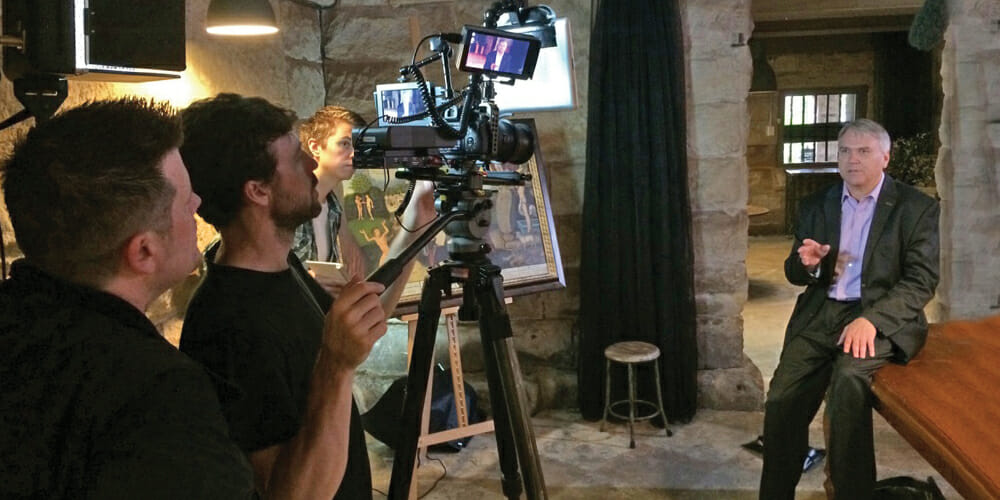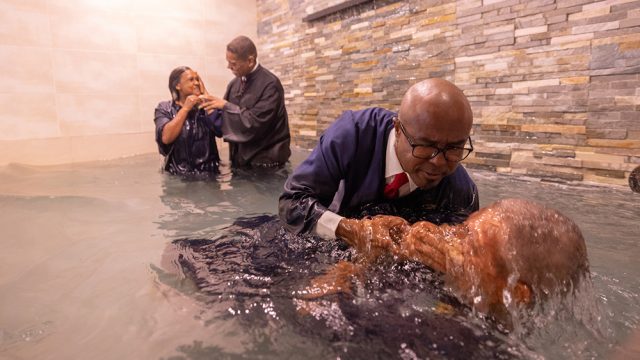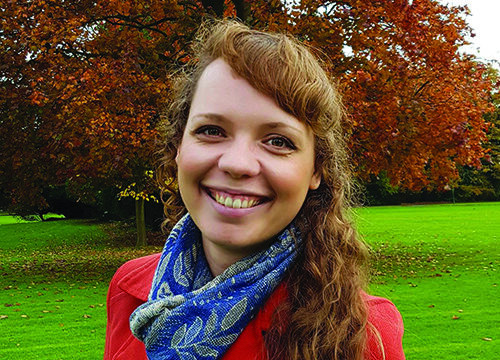Reaching a unique audience for Christ

It’s noon on a hot August day in Paris. It’s the kind of weather that makes people want to find a seat in a cool café to sip a tall glass of ice-cold Perrier. But that’s not what’s happening. Instead, crowds of people from all over the world are waiting in a huge courtyard, standing in the direct blast of the noonday sun.
What are they waiting for? It’s not a movie star, a sporting event, or a politician. And it’s certainly not a religious service. On this stiflingly hot afternoon crowds are swarming to get into the Louvre art museum. As one summer visitor comments: “The Louvre’s art collection is epic, but so is the line. It took us hours to get in!”
Hours to get into an art gallery? It’s extreme, but long lines for great art aren’t unusual. Whether it’s London’s National Gallery, the New York Metropolitan Museum of Art, or the Uffizi Gallery museum in Florence, great art draws huge crowds.
All this got Australia’s Neale Schofield thinking. If we want to reach mass audiences in the great cities of the world, what better place to start than with the art people love so much? he reflected. After all, much of the art so highly valued by modern secular societies was created to communicate deep spiritual truths. Is there a way to rediscover the spiritual secrets behind the world’s greatest art works, he pondered, and, in the process, reintroduce the Greatest Artist to secular audiences?
Schofield, who earned his master’s degree in art and religion from the University of London and currently manages Hope Channel New Zealand, got busy developing an innovative outreach series to do just that. He titled the resulting TV series Masterstroke.
“I worked with the team at Adventist Media in Sydney to develop a concept that weaves the art we all know with the intriguing stories behind it,” Schofield says. “The message of every show is the art may be complex, the stories twisted, and the artists broken, but the news behind it? It is more spectacular than the collective beauty to be found in all the glittering galleries of this world.”
An Innovative Approach
How innovative is Masterstroke’s storytelling? It effortlessly melds into its episode on Vincent van Gogh that years before he fell into a bitter dispute with Gauguin and cut off his own ear, van Gogh planned to become a Protestant pastor. The show challenges the audience to ask the intriguing questions that follow from van Gogh’s complex life. How did his religious ideas influence his art? How did his relationship with God change throughout his life? And what secrets of his art can we unlock from knowing the story of his life?
“A show about great art has to include great art,” says Schofield. “Obviously, we couldn’t secure originals, so I found artists whose technical skills are outstanding. They made reproductions that on screen are not distinguishable from the originals. Our team also animated some of the best-known paintings in history, to bring them to life in a unique way.”
Between the cutting-edge animations, the urban-warehouse set, the on-location footage, and the contemporary storytelling, the shows have an unusually sophisticated feel.
Not Just the Most Famous
The storytelling isn’t limited to household names. In the second series of Masterstroke Neale tells the incredible story of one of the most influential—although frequently overlooked—artists in history: Artemisia Gentileschi. Gentileschi is the only premodern female artist consistently ranked among the greatest artists in history.
Although born in the 1600s, she lived a life that could be ripped from today’s headlines. She was raped by a powerful man who used the system to try to protect himself. She was tortured after she went public with her charge against him. But eventually she was vindicated. All along the way she painted the most evocative images taken from Scripture and associated religious sources to express a fundamental truth: the God of the Bible is no respecter of persons. His justice applies even to the rich, the powerful, and the famous.
It’s a lesson as important today as it was 400 years ago when she painted her masterpieces.
A Unique Audience
As intended, Masterstroke appeals to an audience Adventists seldom reach.
“Since the first series aired, I’ve heard from people all over the globe,” says Schofield. “What is interesting is that the demographics are very different from anything else I’ve worked on. Many of the people we’re hearing from are best described as wealthier, well-educated urbanites.”
One of the more surprising developments came from an elite private boys’ school in Melbourne, Australia.
“I was contacted by their twelfth-grade class. Incredibly, their teacher found Masterstroke online and is using it as part of their curriculum,” Schofield says. “These students come from the demographic we almost never reach. But great art? That is something that connects us. And learning more about what the art means, the context, and the message? That appeals to them.
“It’s simple really,” Schofield continues. “It’s just about meeting people where they are, finding common ground, and then sharing the love of Christ in that context.”
Future Plans
Two full seasons of Masterstroke have been filmed, and there are plans to complement the TV shows with a book and online lessons that combine art history and the gospel.
“We need to use every avenue we have to reach our dying world,” concludes Schofield. “Masterstroke is designed to reach those hundreds of millions of people willing to line up on the hottest of days just to experience the rich beauty of great art. We want to introduce those exhausted, hot crowds in our great cities to cool springs of living water.”
It’s a laudable goal—and Schofield has found an intriguingly unique way to do it.
James Standish is a lawyer who lives with his wife and two children in Silver Spring, Maryland, United States, where he runs a consulting firm, focusing on government relations and media.
You can watch episodes of Masterstroke online at www.ARTVNow.com








